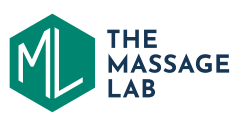Differences between Deep Tissue Massage and Other Massages
The world of massages offers a variety of techniques and approaches to relax and revitalize the body and mind. Among the many types of massages available today, deep tissue massage and other massages are particularly popular. In this article, we will explore the differences between deep tissue massage and other massages and understand the benefits they provide.
What is Deep Tissue Massage?
Deep tissue massage is a specialized type of massage that aims to treat deeper muscles and tissues. This form of massage primarily focuses on eliminating tension and adhesions in the muscle tissue. It specifically targets certain problem areas and uses techniques such as strong pressure, strokes, and strokes to release deep muscle tension.
Unlike other massages that are often gentler and more superficial, deep tissue massage goes deeper into the tissue and can help alleviate chronic pain. It is commonly used for sports injuries, back and neck pain, as well as for individuals with limited mobility.
Differences between Deep Tissue Massage and Other Massages
-
Pressure and Intensity: Deep tissue massage is characterized by stronger pressure and higher intensity compared to other massages. While other massages are often gentle and relaxing, deep tissue massage can be perceived as more intense and sometimes even painful. However, this stronger pressure is necessary to release deeper muscle tension.
-
Targeted Muscles and Tissues: While other massages often treat the entire body, deep tissue massage focuses on specific problem areas and deeper muscles and tissues. It aims to release tension and adhesions in the muscle tissue that are often responsible for pain and restricted movement.
-
Techniques and Movements: Deep tissue massage utilizes specific techniques such as deeper pressure, friction, and cross-friction to release stubborn muscle tension. On the other hand, other massages often use gentler techniques such as strokes, kneading, and stretching to achieve overall relaxation. Therefore, deep tissue massage can be seen as more focused and targeted.
-
Pain Sensation and Recovery Time: Due to the stronger pressure and more intense techniques, deep tissue massage may initially be perceived as painful. However, it is important to note that the pain is an indication that deeper tension is being addressed. The recovery time after a deep tissue massage may be slightly longer than with other massages, as the body needs time to recover from the intensive treatment.
-
Specific Applications: While other massages are often used for general relaxation and stress reduction, deep tissue massage is frequently employed for specific conditions. It can be used to relieve chronic pain, improve mobility, and aid in the rehabilitation of injuries or surgeries.
Conclusion
Deep tissue massage differs from other massages in terms of its stronger pressure, intensity, and targeted treatment of deeper muscles and tissues. Although it may be perceived as somewhat painful, it offers an effective method for eliminating muscle tension and alleviating chronic pain.
It is important to note that everyone responds differently to massages. Before deciding on a deep tissue massage or any other type of massage, it is advisable to consult with a qualified masseur or therapist to determine which massage best suits your individual needs.
FAQ
-
What is deep tissue massage?
- Deep tissue massage is a special type of massage that aims to treat deeper muscles and tissues. It focuses primarily on eliminating tension and adhesions in the muscle tissue. It uses techniques such as strong pressure, strokes, and strokes to release deep muscle tension.
-
How is deep tissue massage different from other massages?
- Deep tissue massage differs from other massages in several ways:
- Pressure and intensity: Deep tissue massage involves stronger pressure and higher intensity compared to other massages. It may be perceived as more intense and sometimes even painful, but this stronger pressure is necessary to release deeper muscle tension.
- Targeted muscles and tissues: While other massages often treat the entire body, deep tissue massage focuses on specific problem areas and deeper muscles and tissues. It aims to release tension and adhesions in the muscle tissue that are often responsible for pain and restricted movement.
- Techniques and movements: Deep tissue massage uses specific techniques such as deeper pressure, friction, and cross-friction to release stubborn muscle tension. Other massages, on the other hand, often use gentler techniques such as strokes, kneading, and stretching to achieve overall relaxation. Therefore, deep tissue massage can be seen as more focused and targeted.
- Sensitivity to pain: Deep tissue massage can sometimes be perceived as painful due to the stronger pressure and intensity used. However, it is important to communicate with the massage therapist to ensure the pressure is within your comfort level.
- Deep tissue massage differs from other massages in several ways:
-
What are the benefits of deep tissue massage?
- Deep tissue massage offers several benefits, including:
- Pain relief: It can help alleviate chronic pain, especially in the back, neck, and shoulders.
- Improved mobility: By releasing muscle tension and adhesions, deep tissue massage can improve flexibility and range of motion.
- Stress reduction: Like other massages, deep tissue massage promotes relaxation and can help reduce stress and anxiety.
- Rehabilitation after injuries: It is commonly used for sports injuries and can aid in the recovery process.
- Deep tissue massage offers several benefits, including:
-
Who can benefit from deep tissue massage?
- Deep tissue massage can benefit individuals who:
- Experience chronic pain or muscle tension.
- Have restricted mobility or range of motion.
- Suffer from sports injuries or muscle strains.
- Seek relief from stress and tension.
- Are looking for a more focused and targeted massage experience.
- Deep tissue massage can benefit individuals who:
